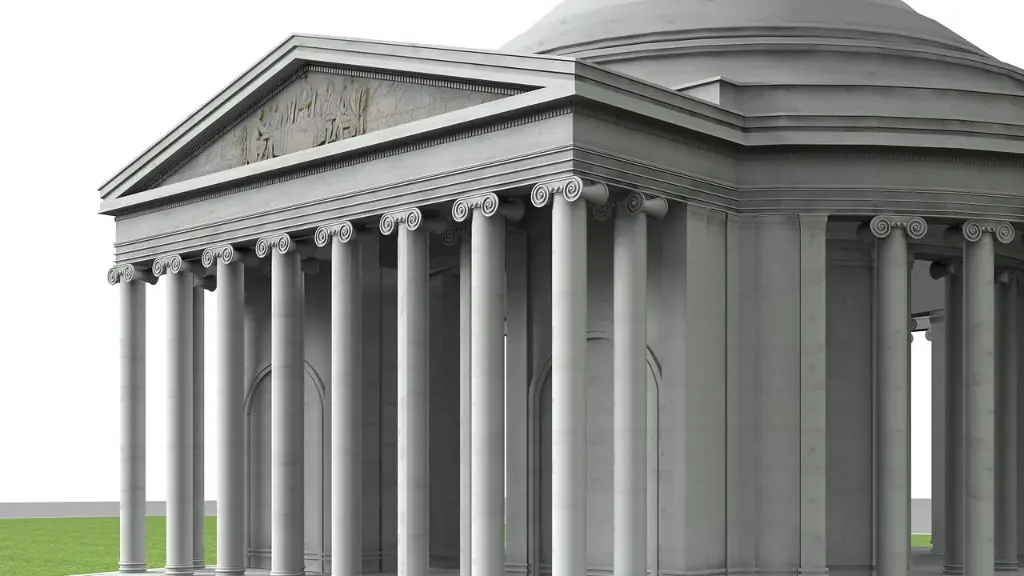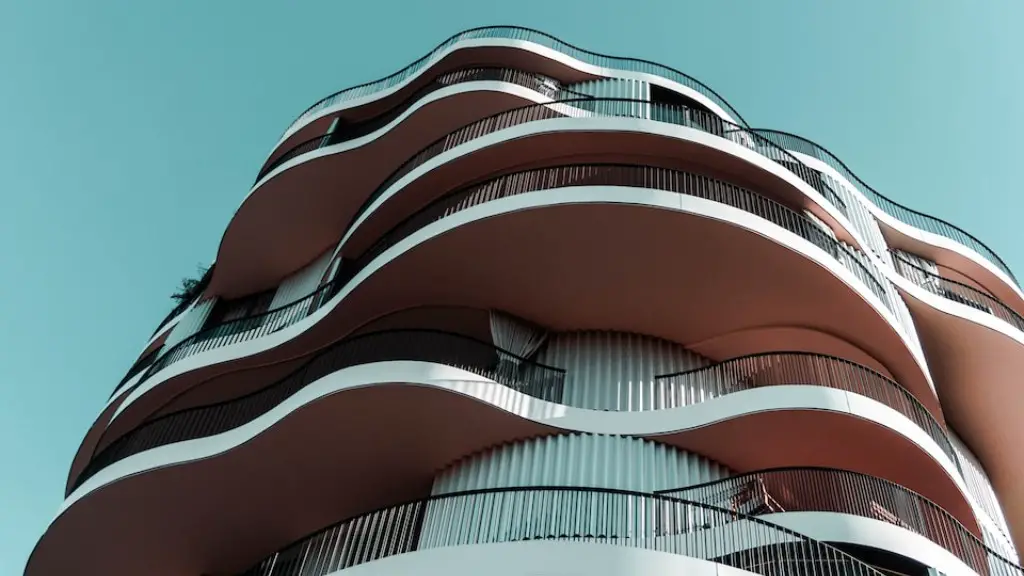Architecture is a complex art form that combines science, art, and design. It is a form of visual expression that encompasses all aspects of our lives, from the built environment we inhabit to the psychological environment that shapes our experiences. At its core, architecture is about creating meaningful places that are both functional and aesthetically pleasing.
The essence of architecture lies in the concept of balance. This involves finding the perfect balance between form and function. It’s about creating a cohesive, unified composition by aligning the elements of structure, technology, and materials with the goals of the project. The goal is to create a sense of harmony and flow between the elements of the building, which is accomplished by combining both aesthetic elements and practical considerations in order to create a unified vision.
The task of the architect is to explore the complexities of function and form, while responding to the contextual environment and the client’s needs. In order to do this, architects must consider a range of practical factors, such as structural considerations, materials and construction techniques, energy efficiency, climate conditions, and budget constraints. At the same time, they must also be mindful of the aesthetic qualities and symbolism of their designs, including elements such as colour, scale, texture and visual impact on the surroundings.
In order to achieve balance in their designs, architects often employ the use of mathematical and geometrical principles, as well as the elements of composition. By creating a harmonious relationship between structure and functions, architects can create visually pleasing and functional architectural designs. The most successful designs are those that are sensitive to the environmental, cultural and historical context, as well as to the individual desires of the client.
Architecture is a creative discipline that requires considerable collaboration between the client, the architect, and the various other consultants and contractors who will be involved in the process. From the very beginning, all parties must work together to establish a shared vision for the project, which will guide the design process and ensure that the final product is a success.
At its heart, architecture is an ongoing dialogue between the past, the present, and the future. It is the combination of these factors that creates a unique and timeless design – one that embodies the spirit of its location while also creating a unique identity that speaks to all who encounter it. In the end, the essence of architecture is to create meaningful places that link the individual to the environment and the community.
The Role Of Technology In Architecture
Technology has become an integral part of modern architecture, with the use of industry-standard computer-aided design (CAD) tools allowing architects to produce highly detailed plans and elevate their designs to the next level of complexity. CAD, or Computer-aided Design and Drafting, is a software-based system that includes drafting, modelling, and animation tools that allow designers to create both structural and aesthetic elements in a much more efficient way than traditional methods. CAD removes the need for manual labor and helps to streamline the design process, allowing architects to focus on the creative side of their profession. This has enabled architects and engineers to significantly improve the efficiency and accuracy of the design process and thus the quality of the final project.
As technological advancements continue to redefine the field of architecture, building owners, designers, and engineers are now more capable of incorporating more sustainable and energy efficient building practices into their designs. From materials to construction techniques, technological advances have allowed architects to design more ecologically-responsible structures that are more responsive to their surroundings and more energy efficient. As technology continues to evolve, it will help to further streamline the design process, improve the quality of construction, and provide architects with an even greater ability to create meaningful and lasting designs.
The Relationship Between Architecture And Light
Light plays an important role in architecture as it has the potential to provide a space with atmosphere, provoking emotion through its direction, intensity, and colour. The manipulation of natural and artificial light has long been a major influence on the design of architectural spaces, as it can alter a space’s perception and atmosphere, as well as define the character of a space. Architects have a deep understanding of the way light can subtly transform a building, both physically and psychologically. Through careful consideration of the relationship between light and architecture, they can create highly effective spatial experiences that are unique to each space.
Light can be used to create a sense of movement within a space and to direct attention to a certain focal point within a room. Natural light from windows and skylights can also bring life to a space, making it more inviting for occupants and creating an emotional response. Architects are well aware of the power of light in architecture and can use it to create an atmosphere that captivates and inspires.
The Role Of Material In Architecture
The choice of materials used in the construction of a building is an important factor in creating a design that functions both aesthetically and functionally. It is important for architects to select materials that are both aesthetically pleasing and durable, as the choice of materials can have a significant impact on the longevity of the structure. Different materials convey different feelings and emotions and can contribute to the overall character of the space.
Architects must also consider the environmental impact of their material selections. The use of sustainable materials, such as recycled timber and earth-friendly insulation, can significantly reduce environmental impact and energy consumption during construction, as well as over the lifetime of the building. In addition, the use of locally sourced materials can help to reduce the overall ecological impact of a construction project.
Choosing the right materials for a project is an essential part of the design process and requires significant collaboration between architects and clients. It is important to take a holistic approach to material selection, considering the aesthetic, functional, and environmental effects of the materials. By carefully selecting the right materials, architects can craft highly effective designs that are both aesthetically pleasing and functional.
The Role Of Art In Architecture
Architecture is often described as a form of art and, as such, architects must approach their designs from an artistic point of view. By using creative techniques and principles, architects can create meaningful and inspiring designs that are both aesthetically pleasing and functional. Although it is important for the design to be practical, it is also important for it to be aesthetically interesting, as this can significantly enhance the user experience and make the space more inviting for occupants.
The integration of art into architecture is an important way for architects to bring their creative vision to life. By carefully considering how to use colour, texture, and other visual elements, architects can create an inclusive, multi-sensory environment that is unique and inspiring. Art can also be used to create a unique identity while still integrating the design into its environment.
Through thoughtful use of art and other visual elements, architects can create meaningful designs that are both aesthetically pleasing and functional. In combination with other design considerations, art can be an integral part of creating an amazing user experience for any architectural project.
The Role Of History In Architecture
Architecture is an expression of our past, and historians play an important role in helping to preserve and improve our built environment. By studying the past, we can gain insight into the processes of urban development, learn from the successes and mistakes of past designs, and further our understanding of how architecture can influence people’s lives. This knowledge can help inform current and future designs, providing valuable insight into the potential impact of a design on its environment.
Historians can help to draw attention to and nurture the use of traditional techniques and materials, as well as to explore the use of a variety of techniques, materials, and techniques found in other cultures and traditions. By looking to the past, architects can draw on the knowledge and expertise of their predecessors to further inform and improve their contemporary designs.
History is an important part of any architectural design, as it helps to inform and shape the final outcome. By researching and understanding the history of an area, architects can ensure that their designs are not only aesthetically pleasing and functional but also reflective of the culture and history of their surroundings.
The Role Of Maintenance & Preservation In Architecture
The process of architecture does not end with the construction of the building. After a building is completed, the process of maintaining and preserving it must begin. This is an essential part of ensuring that a building is safe, durable, and aesthetically appealing for years to come. Through regular maintenance and preventive measures, architects can extend the life of their buildings and ensure that they remain safe and aesthetically pleasing.
The importance of preventive maintenance often goes overlooked, but it is a critical part of ensuring that a building’s structure remains sound and that its aesthetic features remain intact. In addition, regular maintenance can help to extend the life of a structure and to reduce the long-term cost of ownership. By regularly inspecting the building, repairing any damage, and taking other preventive steps to maintain the structure, architects can help to ensure that the building remains safe and attractive for years to come.
Architects must also consider the preservation of their buildings when planning for the future. This involves setting aside funds for future renovations and repairs, choosing materials that will stand the test of time, and regularly documenting the condition of the building. By doing so, architects can help to ensure the longevity of their buildings and ensure that future generations can benefit from their designs.





